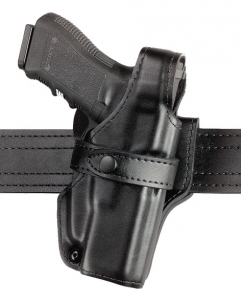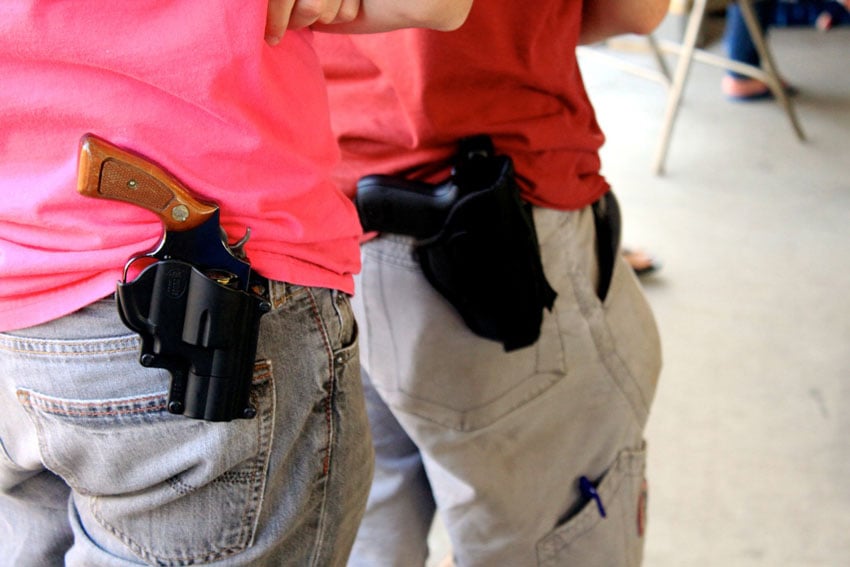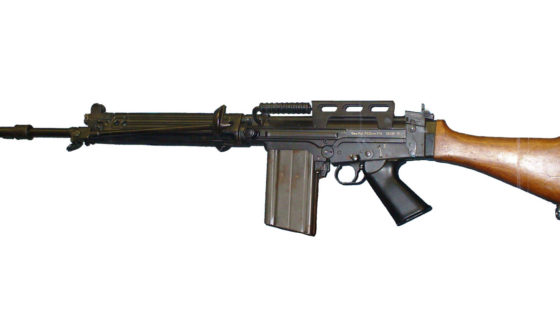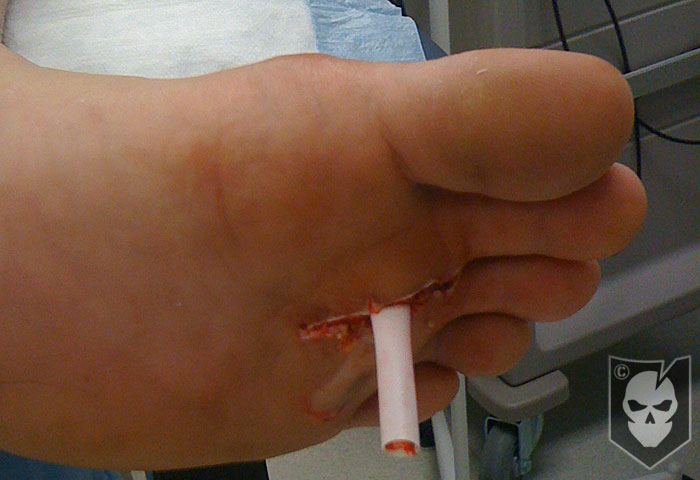Don’t Give Up Your Gun: Tips for Weapon Retention
Being killed by your own firearm is not the way any of us wants to go. Unfortunately, many law enforcement officers have been disarmed and subsequently killed with their own gun. Some citizens have also met this unfortunate end. There are three things that can help prevent being disarmed by an assailant: awareness, retention holsters and weapon retention training.
While this article will focus on the carrying of handguns, excellent retention techniques exist for the long gun as well. In many ways, retention of a shotgun or rifle is easier than that of a handgun.
Awareness
The first, and perhaps best, counter to a gun grab is your awareness of the situation. You have to be aware of how your weapons are exposed to the enemy and what pre-attack signals your potential assailant may be exhibiting.
Weapon Exposure
For a law enforcement or security officer, you must be wary of turning your holstered firearm toward the subject you are investigating. The same holds true for any citizen exercising their right to open carry. Turning the gun side of your body toward a potential assailant is an invitation you do not want to send.
If you are standing directly in front of a potential attacker, you can turn your body about 45 °, rotating your weapon-side away from the danger. This will make it harder for the subject to try to grab your gun quickly, but still allow you to face the threat.
Observe Distance
A suspect may try to take your firearm while it is in your hands, not in the holster. When pointing a firearm at a suspect, you want to be very careful in approaching him or her.
One advantage of a firearm is the operator’s ability to place distance between him and the assailant that would not be possible with a knife or baton. Once you close to the distance, the assailant may knock the firearm off target and move to an inside position where you are vulnerable, or the suspect may be able to take control of the gun.
I suggest not closing with the subject unless circumstances demand you to do so. For example, a police officer will have to approach a subject to handcuff him. An armed citizen who is holding an intruder at gun point should avoid approaching the subject.
If you do have to approach, make sure you have cover officers on scene to immediately deliver deadly force if required. An armed citizen is less likely to have such assistance, but a team approach by trained family members is possible.
Pre-Attack Signals
Another aspect of awareness is reading the suspect’s intentions. Oftentimes, an assailant will telegraph his intentions to attack you or to try to disarm you prior to the actual attack.
Pay attention to the suspect and look for behaviors such as:
- Staring at your firearm,
- Repeated glancing towards your firearm,
- Movements to close the distance between you and him,
- Movements to the side of your firearm,
- Odd or inappropriate questions about your firearm,
- Or other body signals that suggest imminent fight or flight (shuffling feet, shoulder shifts, clenching fists, etc.).
If you see a suspect exhibiting these signs, address them as an imminent threat using whichever options are reasonable at that time. Having someone staring at your gun while they are clearly calculating the odds of success is a little unnerving the first time you experience it. How you react can determine the outcome of the encounter before the suspect’s move is ever made.
Retention Holsters
 Retention holsters are an excellent tool to help retain control of your firearm in a gun grab. A retention holster does not replace awareness and retention training, but, like a bullet resistant vest, a retention holster may give you the second chance you need to prevail. More than one police officer is alive today because a gun grab was defeated by a retention holster.
Retention holsters are an excellent tool to help retain control of your firearm in a gun grab. A retention holster does not replace awareness and retention training, but, like a bullet resistant vest, a retention holster may give you the second chance you need to prevail. More than one police officer is alive today because a gun grab was defeated by a retention holster.
By use of levers, hidden snaps, buttons and directional drawing, duty retention holsters can slow or even prevent an assailant from taking your gun. If you are in uniform, I strongly recommend carrying your duty gun in a retention holster.
One of the best retention holsters on the market is also one of the pioneers in this category of gun leather: the Safariland 070 SS-III. The 070 was a Bill Rogers design that Safariland has been selling for about 30 years. I’ve spent a lot of hours carrying guns in this holster, and I give it a wholehearted recommendation.
For citizens exercising open carry, I also suggest a retention holster. A single snap on the top of the holster is easy to defeat, but better than nothing. There are retention holsters on the market for both open and concealed carry, including products from Bianchi, Safariland, 5.11 and BLACKHAWK!
Retention holsters require additional training for unconscious competency. In other words, you need to spend time learning the holster so you can draw smoothly under pressure.
Retention Training
If someone grabs your gun, do you know what to do? Learning techniques to defeat a gun grab can literally be a lifesaver.
Jim Lindell pioneered training in gun retention techniques back in the 1970’s when he was working for the Kansas City Regional Police Academy. Those techniques have been the basis for many retention training programs in the US.
The concept behind most retention training is leverage, not brute force. A small framed officer or armed citizen can easily be overpowered when matching force to force. Leverage, however, allows a small person to move a mountain.
I strongly recommend seeking out gun retention training. An article like this is wholly inadequate to teach the techniques. After you receive the basic training, it is up to you to practice it and make it natural and instinctive.
Don’t forget that an assailant trying to take your gun away is a deadly force situation. Respond appropriately. The use of a back-up gun, knife or crushing blow to the windpipe may all be justifiable in a lethal force encounter.
Conclusion
If you have a firearm for self-defense or you carry one on the job, you owe it to yourself to practice good gun retention. Be alert of your surrounds and who you are dealing with. Get good training and practice it. If you carry an exposed firearm, seriously consider a quality retention holster.
Dying sucks. Giving your gun to the dirtbag who kills you is even worse. Stay safe!
Richard is a Police Officer with a mid-sized department in the Tampa Bay area and also publishes the police training site, BlueSheepdog.com











Discussion